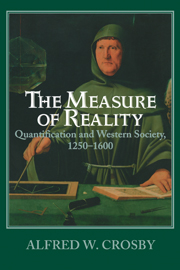11 - The New Model
Published online by Cambridge University Press: 05 October 2013
Summary
Beginning in the miraculous decades around the turn of the fourteenth century (decades unmatched in their radical changes in perception until the era of Einstein and Picasso) and continuing on for generations, sometimes swiftly, sometimes sluggishly, sometimes in one terrain of mentalité and sometimes another, Western Europeans evolved a new way, more purely visual and quantitative than the old, of perceiving time, space, and material environment.
Vision was and is a martinet and an aggressor, encroaching on the realms of the other senses. Record events in chronological order on parchment or paper and you have a time machine. You can step back and observe beginnings and endings simultaneously. You can alter time's direction, and you can halt time so as to examine individual events. If you are an accountant, you can proceed backward to find a mistake; you can construct a balance sheet like a still photograph of the whistling storm of transactions.
You can compare in detail one sequence with another, or supplement the one with another or several others, all running at their own rates. Or you can begin with now and trigger a retrogression, or even a retrogression and a progression simultaneously.
Western composers pioneered such adventures in the thirteenth and fourteenth centuries, creating masterpieces to delight musicians and mathematicians alike to this day.
Vision empowered its aficionados to see and think of space geometrically. Awed by light that expanded, instantly, it seemed, in cones and globes of radiation, light that was the one discernible thing that behaved with the neatness of diagrams in a Euclidean text, they let vision guide them to Renaissance perspective and some of the greatest works of art of all the ages, and thence to a new astronomy.
- Type
- Chapter
- Information
- The Measure of RealityQuantification in Western Europe, 1250–1600, pp. 227 - 240Publisher: Cambridge University PressPrint publication year: 1996



